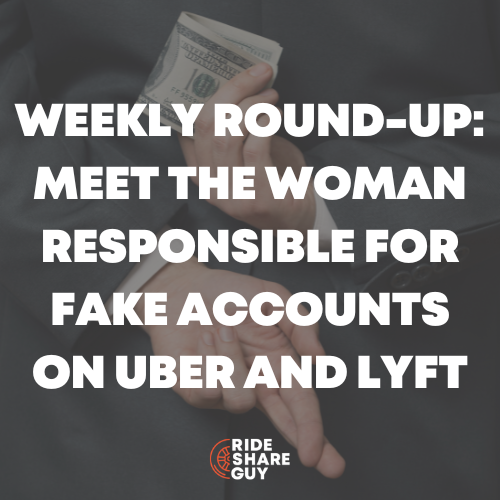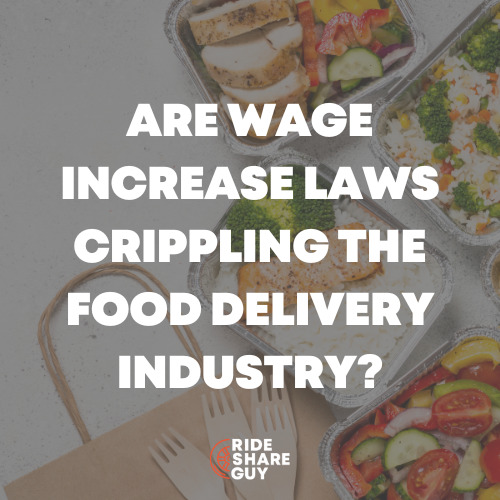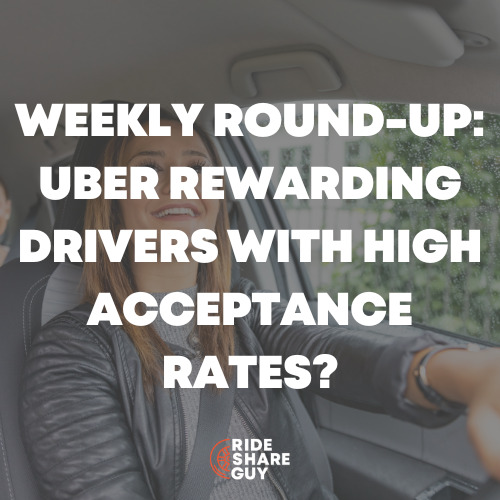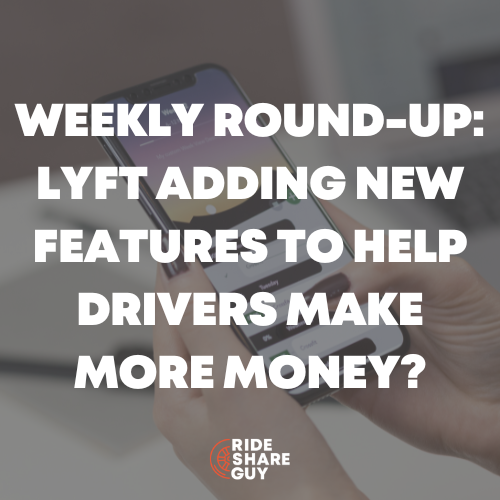Last week was a busy one: first, the bombshell announcement by MIT. That story created an interesting conversation and, while not entirely accurate, brought to light some of the struggles facing us as drivers. Today, senior contributor John Ince keeps busy with the MIT study, the response to it, plus Uber’s financial woes.
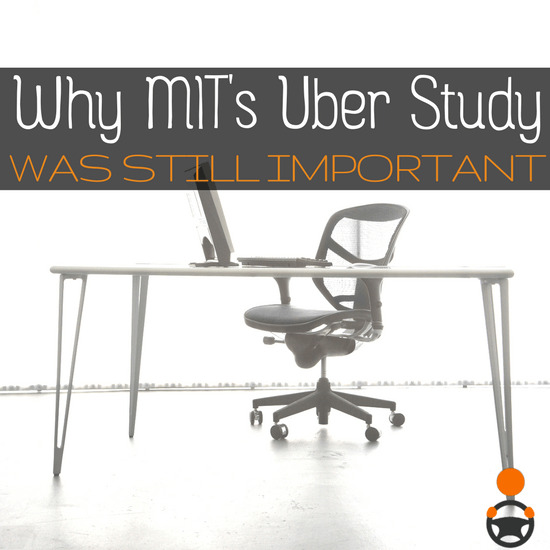
MIT’s Uber study couldn’t possibly have been right. It was still important [Reuters/Quartz Media]
Sum and Substance: Some time last month, the Massachusetts Institute of Technology published a two-page brief of a forthcoming paper, “The Economics of Ride-Hailing: Driver Revenue, Expenses and Taxes.” The brief explained that through a “detailed analysis” of survey data, the authors, all affiliates of Stanford University in California, had found that the median profit from driving for Uber or Lyft was $3.37 an hour before taxes—well under minimum wage.
The brief flew under the radar until March 1, when public relations firm Berlin Rosen sent an email blast about its “bombshell findings.” The internet was soon flooded with headlines like:
- Uber drivers often make below minimum wage, report finds (The Guardian)
- Uber, Lyft Drivers Earning A Median Profit Of $3.37 Per Hour, Study Says (NPR)
- MIT study shows how much driving for Uber or Lyft sucks (TechCrunch)
- After Costs, Uber and Lyft Drivers Average Less Than $4 an Hour, Depressing New Study Claims (Gizmodo)
- Uber, Lyft drivers actually earn less than minimum wage, MIT survey suggests (USA Today)
- MIT study shows driving for Uber or Lyft is worse than literally any real job (BGR)
Uber has conducted several of its own economic studies on driver earnings, and it didn’t take long for economists who have worked with Uber to rush to the company’s defense…
What happened? The MIT study was based on self-reported earnings data from a survey of about 1,100 Uber and Lyft drivers conducted in 2017 by Harry Campbell at driver blog The Rideshare Guy.
The authors made a series of adjustments to the results. Most importantly, they took the response to survey question 14, “How much money do you make in the average month?” and discounted it based on the response to survey question 15, “How much of your total monthly income comes from driving?” For example, if someone answered “$1,000 to $2,000” to question 14 and “around half” to question 15, then the authors decided that person made about $1,400 a month (a statistical assumption) and half of that, around $700, from ride-hail driving.
… Yes, $3.37 an hour was a crazy number. But when people are primed to believe that driving for Uber is a crappy job, then you better bet they are going to believe a prestigious academic study that comes along telling them exactly that.
Related: Do Uber and Lyft Drivers Really Only Make $3.37 per Hour?
My Take: Somehow RSG found itself in the middle of a major controversy that could have had devastating consequences to Uber and Lyft and their ability to recruit new drivers. The issue in question is exactly how much money drivers are earning for their labors.
Uber and Lyft have long embellished the figures suggesting that drivers were doing very, very well for themselves. This deception took root in the media and the public perception, until various studies including an annual study on this website challenged that rosy view.
This year’s RSG study with nearly 1,200 respondents pegged the figure in the $16/hr range. Researchers at MIT and Stanford took that data and massaged it, applying newer and harsher assumptions, and came up with a shockingly low figure in the $3-4/hr range, that was eventually revised to $8-10 per hour. They included expenses like gas, maintenance, depreciation, insurance etc.
This sent Uber’s PR machine into high gear, they had their own economists challenge the MIT study, and suddenly nobody knew what was right. Here’s a handy guide to this and future disputes – drivers are making a lot less that Uber or Lyft say they are. How much less, is now and probably always will be a matter of dispute.
Uber Is Running Out of Ways to Save Itself [Vanity Fair]
Sum and Substance: Among the messes Dara Khosrowshahi inherited when he arrived at Uber last year is an unanswered, existential question: how to turn a profit on a venture that is bleeding money.
Uber’s push to cement its market dominance hasn’t come cheap; according to a new report, Uber has spent $10.7 billion over the past nine years—a staggering amount, and significantly more than any other tech company. While it’s not unusual for Silicon Valley start-ups to experience growing pains, Uber is an anomaly for reasons that seem inextricable from the fundamental economics of the taxi industry….
Even in Uber’s biggest markets, however, there are still too many competitors to boost prices, or to increase its take of receipts. Bloomberg reports that while investors have poured a grand total of $17.3 billion into Uber, much of that goes to its drivers: In 2017, Uber made $37 billion on gross bookings, but Uber’s cut was just $7.4 billion…. Uber’s long-term plan to replace drivers with automated cars, meanwhile, remains years away.
At the same time, it is almost impossible to see how Uber can squeeze more money from its drivers. According to the first draft of a paper from Massachusetts Institute of Technology, released last month, the average Uber driver makes $3.37 in hourly profit. (After backlash from Uber and its own chief economist, Jonathan Hall, the report’s authors released a new draft, this time finding that drivers make a median profit of $8.55—which still isn’t great for a company whose entire business model is, for now, predicated on persuading potential drivers to work for Uber under the guise of earning a living.) …
Khosrowshahi will have to pull a rabbit out of his hat to sell Wall Street on a mature tech company that can’t get out of the red.
My Take: With DK’s public pronouncement that Uber’s long awaited IPO would be coming in 2019, the clock is now ticking.Years ago, it would have been unheard of that a company could go public unless they were showing a profit.
Netscape’s IPO changed all that and until the crash of 2000-01, there seemed to be this kind of surreality where companies with nothing more that hockey stick growth curves were raising astronomical sums on pubic markets. Then the dotcom bubble burst and reality set in.
Today Uber is again testing the limits of reality. No private company has lost more money and achieved such a high valuation. But as the Softbank deal shows, private markets are highly imperfect gages of value. Case in point: investors sold $9 billion of their Uber stock at a $50 billion valuation, while simultaneously Uber the company sold $1 billion of its stock to Softbank at a $70 billion valuation.
Something ain’t right here, and unless DK and team can start to show some credible path to profitability and demonstrate a viable business model, I suspect the reception from public markets is going to be very cold.
Uber seeking billion-dollar loan [Telegraph.uk]
Sum and Substance: Uber has confirmed that it is looking to secure a $1.25bn (£900m) leveraged loan, less than a month after revealing that its losses ballooned to $4.5bn last year.
The ride-hailing company is thought to be contacting loan investors directly over the financing, which was first reported by Bloomberg, with Uber expected to meet with investors on Friday.
By choosing to raise funds through debt rather than equity, this will mean Uber’s existing shareholder base will not be diluted.
It comes just over a year and a half after Uber last tapped the leverage loan market, when it raised $1.15bn, with those funds having been used to help Uber expand globally, as well as invest further in research and development.
My Take: I see this as a sign of trouble. It’s very unusual for a startup (if we can call Uber that) to seek debt financing, especially after having closed an equity round (the Softbank deal) just months before. With an annualized burn rate of $4.5 billion, the $1.25 billion loan its seeking will barely cover 4 months of losses. Nevertheless in this global financial environment, with a glut of cash looking for a home, I suspect Uber won’t have trouble finding the money.
The question is what will it cost them? The debt financing obligations added to the $1.5 billion loan last year make it that much more difficult for Uber to break even, much less turn a profit. This kind of financing is clearly unsustainable.
Readers, what do you think of this week’s round up?
-John @ RSG

